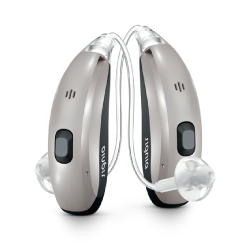If you have hearing loss in both ears and you are a hearing aid candidate in both ears, you should wear two hearing aids. You have two ears because you need two ears. If we try to amplify sound in only one ear, you cannot expect to do very well. Even the best hearing aid will sound “flat” or “dull” when worn in only one ear.
Localization (knowing where the sound came from) is only possible with two ears. Localization is not just a sound quality issue; it may also be a safety issue. Think about how important it is to know where warning and safety sounds (sirens, screams, babies crying, etc) are coming from. Using both ears together also impacts how well you hear in noise because binaural hearing permits you to selectively attend to the desired signal, while “squelching” or paying less attention to undesired sounds such as background noise.
People cannot hear well using only one ear. There are studies in the research literature which show children with one normal ear and one “deaf” ear are ten times more likely to repeat a grade as compared to children with two normally hearing ears. Additionally, we know that if you have two ears with hearing impairment, and you wear only one hearing aid, the unaided ear is likely to lose word understanding ability more quickly than the ear wearing the hearing aid.
Binaural hearing allows a quality of “spaciousness” or “high fidelity” to sounds, which cannot occur with monaural (one ear) listening. Understanding speech clearly, particularly in challenging and noisy situations, is easier while using both ears. Additionally, using two hearing aids allows people to speak with you from either side of your head – not just your “good” side!


